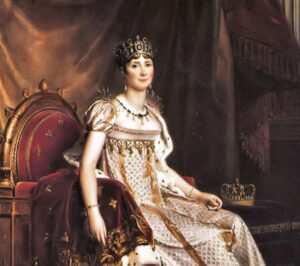The Size Problem
When we think of defining aspects of the United States Constitution, we often think of the separation of powers or the Bill of Rights. No doubt, these are important concepts enshrined in American government that still affect our lives today. Focusing on some specific aspects of the US Constitution, however, makes it easy to miss the somewhat larger problem the Founding Fathers were trying to solve.
Up until the United States, governments that had any shred of self-representation—Athens, Rome, Venice, Genoa, just to name a few—had been small. Though they punched above their weight in terms of power and prosperity, their small size left them disadvantaged militarily compared to other states, who, though less dynamic, could subjugate these republics with larger forces. Even if these city-states grew larger, such as Rome, it became too easy for one general to take control and shift the government to a self-serving tyranny. It was a catch-22: too small, and a republic was unsafe from larger powers, too large, and it was unsafe from itself. The question at the time was: could a state be created that preserved the benefits of republicanism while being large enough to defend itself against major powers?
The Solution
Drawing upon historical and contemporary examples, Enlightenment thinkers, such as Montesquieu, had already begun hammering out a potential solution to the “size” problem: a group of republics could form a confederacy. In such a confederacy, local matters would be left to individual republics while matters that affected all the states, such as foreign policy, would be dealt with through the confederacy. In this way, the states could enjoy the dynamism of small republics while harnessing the power of a large state.
The solution was by no means unprecedented. Indeed, Montesquieu himself points out that the republics of the past—such as Athens and Rome—reached the height of their power when they formed similar leagues or groups. Even in his time, Holland, Switzerland, and some German cities had already begun to form similar arrangements with some success. The difference was that these loose confederacies were largely ad hoc products of history. If someone had a chance to formally think through and intentionally institute a confederacy of republics, what should it look like? What exactly should the confederacy control and what should the individual republics control? How should the confederacy be governed and how should the republics vote within the confederacy? Could the confederacy be too large? If divided, would similar confederacies fight each other? How would the confederacy be prevented from sliding into tyranny? How would taxes work? How would the military work?
The Federalist Papers
It was against this historical backdrop that the framers of the US Constitution found themselves. Situated in a territory that already contained small republics that had recently united to throw off a common enemy, the United States could hardly have been more perfectly positioned to experiment with confederate government—and the Founding Fathers knew it. To Hamilton, the question of the US Constitution was “whether societies of men are really capable or not of establishing good government from reflection and choice, or whether they are forever destined to depend for their political constitutions on accident and force.”
The merits of confederate government—and what exactly it should look like—are at the core of the now-famous Federalist Papers, which did eventually win out in the creation of stronger confederate union between the republics of the United States. Although we like to credit the United States with “democracy” and “freedom”, such attributes could cause us to miss what was at stake. The United States is a unique solution deliberately designed to improve upon the problems of representative governments in the past. And it’s an experiment we are still living out today.



